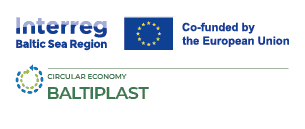
How Plastic Pollution and Climate Change Are Connected: Why We Need to Act Now
28 August 2024
The Overlooked Climate Impact of Plastics
Plastics are not just litter that pollutes our landscapes and oceans; they are a significant contributor to climate change. From production to disposal, the plastic lifecycle is a continuous source of greenhouse gas (GHG) emissions. An astonishing 99% of plastics are derived from fossil fuels, and each stage of their lifecycle—extraction, production, transportation, and disposal—releases substantial amounts of carbon dioxide (CO2) and other GHGs. In 2015 alone, plastic production contributed 1.96 gigatons of CO2 equivalent emissions, with a projected rise to 4.3 gigatons by 2050 if current trends continue. This is equivalent to approximately 13% of the remaining carbon budget (Plastic & Climate, 2019).
Plastics are also unique in their contribution to climate change due to their persistent nature. When exposed to sunlight, plastics release methane and ethylene—potent GHGs that increase over time. Notably, plastic bags, which are predominantly composed of polyethylene, are among the most significant contributors to this problem. Since 1950, over eight billion tons of plastic bags have been produced, with their production expected to double in the next two decades.
Plastics and the Ocean’s Role in Climate Regulation
The global ocean, particularly regions like the Baltic Sea, plays a critical role in regulating the Earth’s climate by acting as a major carbon sink, absorbing about 25% of CO2 emissions generated by human activities. However, plastic pollution is disrupting this vital function, with severe implications for climate change.
Marine organisms, such as plankton, fish, and larger mammals, are integral to the ocean’s carbon cycle. These organisms help sequester CO2 through a process known as the biological carbon pump, where CO2 absorbed during photosynthesis is transported to deeper waters when these organisms die and sink. However, when these organisms ingest microplastics, their ability to perform this function is compromised, reducing the ocean’s capacity to absorb CO2.
Moreover, plastics can alter the chemical composition of seawater, increasing its acidity and affecting marine ecosystems like coral reefs and shellfish, which are crucial for carbon sequestration. As these ecosystems degrade, the ocean’s ability to mitigate climate change diminishes.
Plastics also create physical barriers in marine environments, disrupting the growth and health of seagrasses and other aquatic plants that are essential for carbon storage. The cumulative effect of these disruptions is a significant reduction in the ocean’s ability to act as a buffer against climate change.
The Vicious Cycle: How Climate Change Fuels Plastic Pollution
The relationship between plastic pollution and climate change is bidirectional, with each exacerbating the other. As global temperatures rise, the breakdown of plastics into microplastics accelerates, increasing the presence of these pollutants in the environment. Simultaneously, climate-related disruptions, such as extreme weather events, drive up the demand for single-use plastics, particularly in emergency situations where convenience is prioritized.
Urbanization, driven by climate change-related migration, further compounds the issue. As more people move to urban areas, the demand for consumer goods—often packaged in plastic—escalates. Additionally, the economic instability brought on by climate change can lead businesses to opt for cheaper materials, such as plastics, despite their environmental impact.
Efforts to innovate with biodegradable and oxo-degradable plastics have also fallen short. These alternatives often create new environmental problems, such as the formation of non-recyclable microplastics, complicating the fight against plastic pollution.
Mitigating the Crisis
To address these interconnected challenges, reducing plastic production and consumption must be a priority. By limiting the use of plastics, particularly single-use items, we can significantly reduce GHG emissions and ease the strain on our oceans, allowing them to better fulfill their role as climate regulators.
During the holiday season, particularly in regions like the Baltic Sea, simple actions can make a difference. Opting for reusable bottles, avoiding single-use plastics, and choosing sunscreen without microplastics are small but impactful steps. Collectively, these actions contribute to a larger effort to curb plastic pollution and its contribution to climate change.
In conclusion, plastic pollution and climate change are not isolated issues; they are deeply intertwined. Addressing one requires addressing the other. By understanding and acting on this connection, we can make significant strides in protecting our planet for future generations.
Sources:
Helen V. Ford, Nia H. Jones, Andrew J. Davies, Brendan J. Godley, Jenna R. Jambeck, Imogen E. Napper, Coleen C. Suckling, Gareth J. Williams, Lucy C. Woodall, Heather J. Koldewey, The fundamental links between climate change and marine plastic pollution, Science of The Total Environment, Volume 806, Part 1, 2022, 150392, ISSN 0048-9697,
https://doi.org/10.1016/j.scitotenv.2021.150392.
Plastic & Climate: The Hidden Costs of a Plastic Planet, 2019, Available online: https://www.ciel.org/plasticandclimate/
Additional links
- Read about the project
- Microplastics are in the air we breathe and in Earth’s atmosphere, and they affect the climate
- Plastic & Climate: The Hidden Costs of a Plastic Planet
- Climate Impact of Primary Plastic Production
- What do plastics have to do with climate change?
- The fundamental links between climate change and marine plastic pollution





